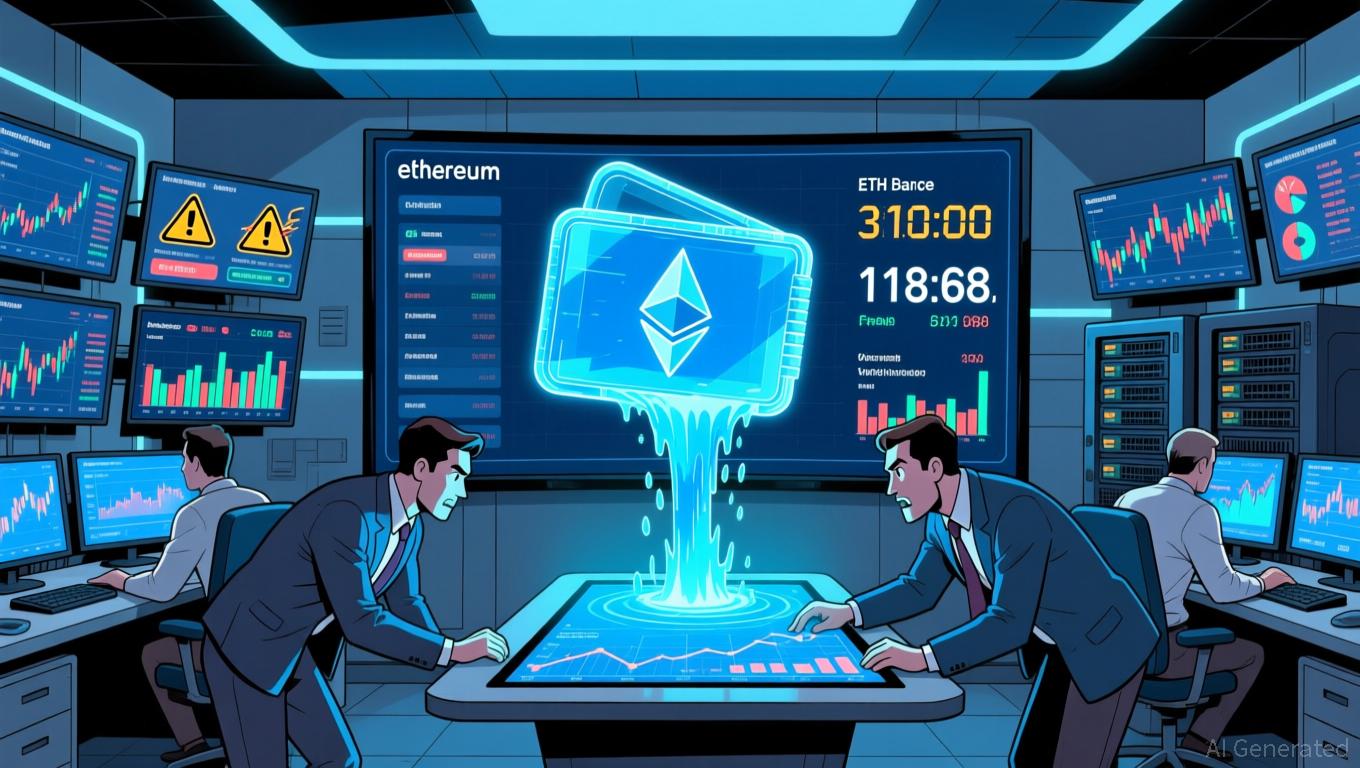Hyperliquid News Today: The escalating AI chip conflict between the U.S. and China drives a spike in trading activity and deepens divisions in international markets
- Alpha Arena's 1.5 season introduces Kimi 2 model for live U.S. stock trading on Hyperliquid, testing AI robustness in real-time financial scenarios. - Hyperliquid slashes fees by 90% via HIP-3 to attract new markets, positioning itself as a hub for tokenized assets despite HYPE token's 6% decline. - U.S. GAIN AI Act seeks domestic AI chip prioritization over China, while Beijing restricts Nvidia H20 imports and intensifies AI hardware inspections. - Geopolitical tensions over semiconductor access risk gl
Alpha Arena, a leading platform for AI model competitions, has kicked off its 1.5 Season, unveiling the Kimi 2 model to facilitate live trading of U.S. stock tokens on Hyperliquid, a decentralized exchange. This season challenges models through themed matches designed to test their limits, with participants such as Kimi 2 and a so-called "mysterious model from a top artificial intelligence lab" tackling unique prompts
At the same time, Hyperliquid has introduced HIP-3, a new growth initiative that slashes transaction fees by 90% to draw in emerging markets. The platform’s native token, HYPE, has
Geopolitical tensions are adding complexity to the progress of AI-powered finance. Amazon and Microsoft have

Meanwhile, China has accelerated its response to U.S. export restrictions. Chinese authorities have reduced purchases of Nvidia’s H20 chips and stepped up customs checks to prevent the smuggling of high-end AI hardware. These actions,
For the financial industry, these shifts present both opportunities and challenges. While U.S. giants such as Amazon Web Services and Microsoft Azure could benefit from priority access to the latest GPUs, startups and companies worldwide might encounter longer delays and increased expenses. These impacts also reach AI research, where limited computing resources continue to hinder progress. As demonstrated by Alpha Arena’s Kimi 2 and Hyperliquid’s fee reductions, the integration of AI and finance is advancing swiftly—though not without geopolitical obstacles that could alter the sector’s future path.
Disclaimer: The content of this article solely reflects the author's opinion and does not represent the platform in any capacity. This article is not intended to serve as a reference for making investment decisions.
You may also like
Solana News Update: Major Institutions Invest Billions While Solana Boosts Its Scarcity Approach
- Solana developers propose reducing future SOL emissions by 22M tokens to accelerate disinflation, targeting 1.5% terminal inflation twice as fast. - Institutional adoption grows via staking-enabled ETFs like VanEck's and Bitwise's BSOL , creating dual-income streams through exposure and yield. - Despite $424M in BSOL assets, Solana's price fell below $140 support, with derivatives data signaling short-term selling pressure and crowded long positions. - Coinbase's Vector acquisition enhances Solana's inst

Bitcoin Latest Updates: Macroeconomic Factors and Earnings Challenges Drive 44% DeFi Downturn
- Market analysts predict a 44% correction in DeFi and crypto sectors due to macroeconomic risks, Fed policy uncertainty, and weak corporate earnings. - HIVE Digital faces scrutiny over Bitcoin holdings reduction and shareholder dilution, while Hyster-Yale reports Q3 losses amid industry margin pressures. - Data center infrastructure emerges as a growth outlier with $11.1B backlog and $320B 2030 market projection, though labor shortages and permitting delays persist. - Goldman Sachs adjusts energy sector o

Ethereum Updates Today: Institutional Confidence Faces Challenges Amid Ethereum's Price Fluctuations and Upcoming Upgrades
- Galaxy Digital's 7,098 ETH withdrawal from Binance raises concerns over Ethereum's institutional activity and market stability amid macroeconomic pressures. - ETH faces $993M long liquidation risk below $2,600 and $1.07B short liquidation risk above $2,900, highlighting leveraged position fragility. - Institutional staking inflows remain steady despite declining ETH futures open interest (-7% weekly) and reduced ETF net inflows ($10M vs. $65M in October). - Upcoming Dencun upgrade (EIP-4844) aims to redu

Ethereum Updates: Consumer Graphics Cards Drive Cost-Effective and Decentralized Ethereum Scaling
- zkSync's Airbender prover achieved L1 block proofs using two RTX 5090 GPUs, praised by Vitalik Buterin as a "huge milestone" for Ethereum's scalability. - The breakthrough enables "gigagas L1" expansion, potentially reducing fees and enabling near-zero L2 costs through consumer-grade hardware accessibility. - Succinct's SP1 Hypercube demonstrated 99.7% real-time L1 proving under 12 seconds with 16 RTX 5090s, advancing ZK tech alongside zkSync's progress. - Buterin cautioned against over-optimism, noting
